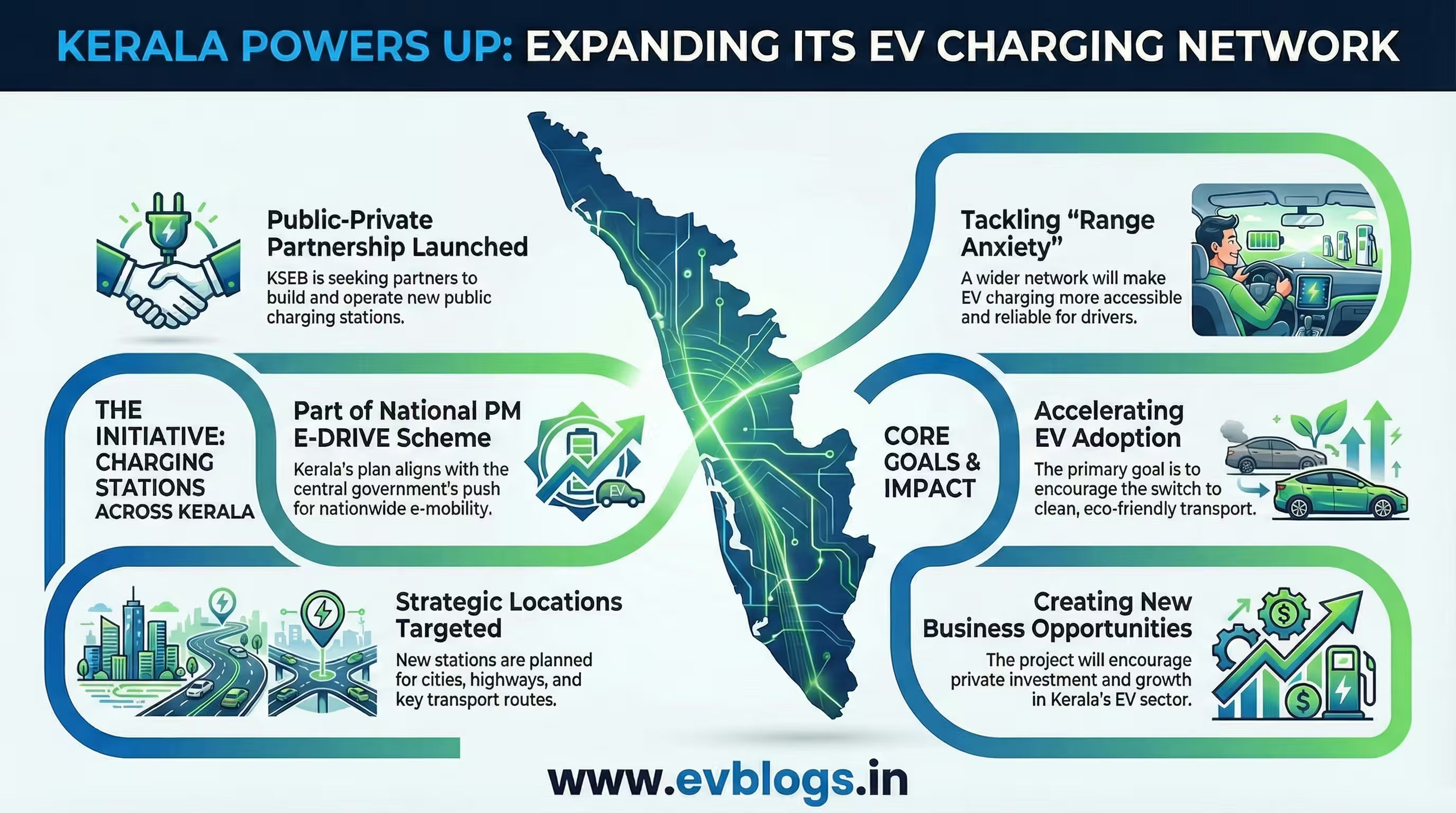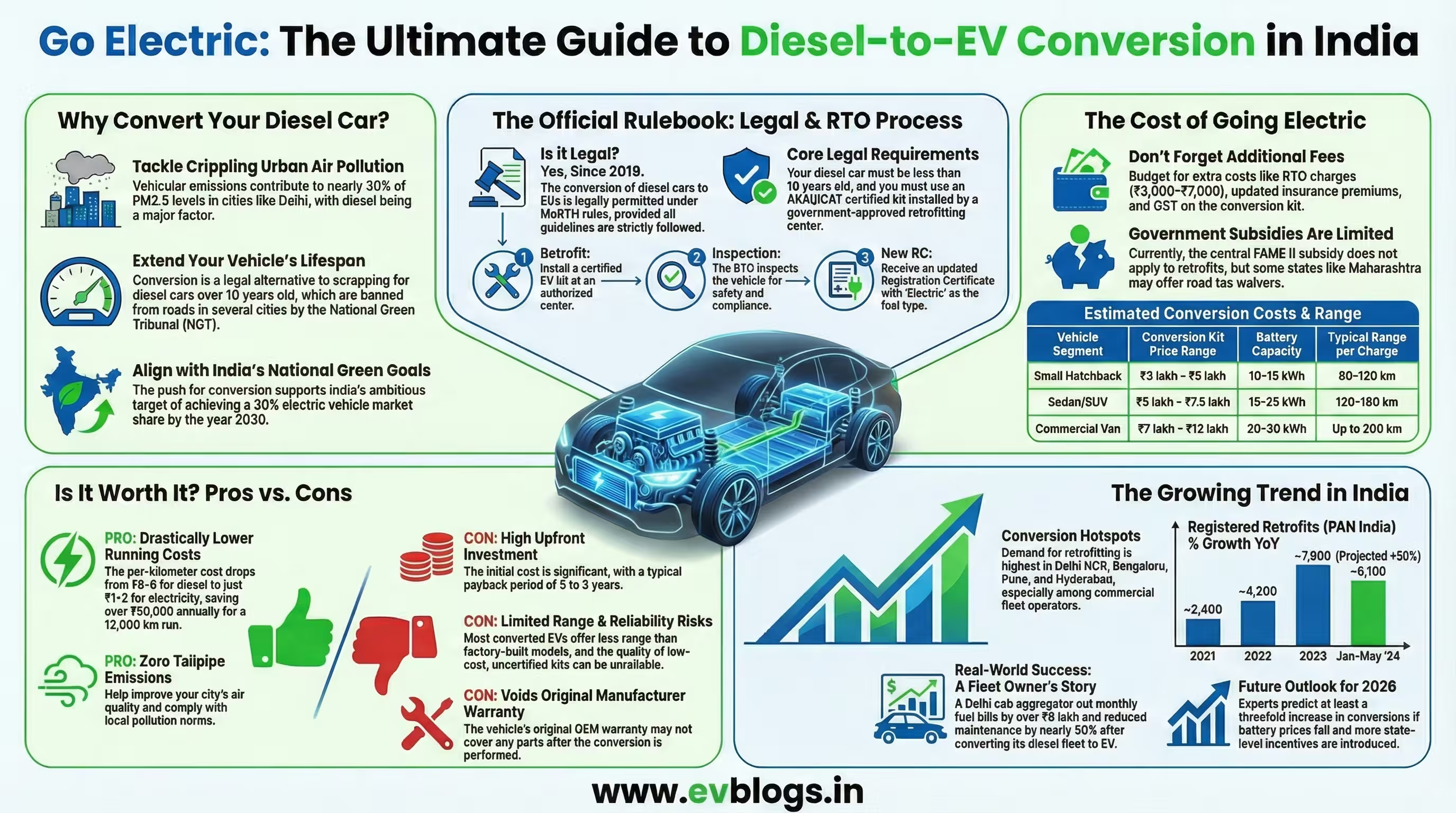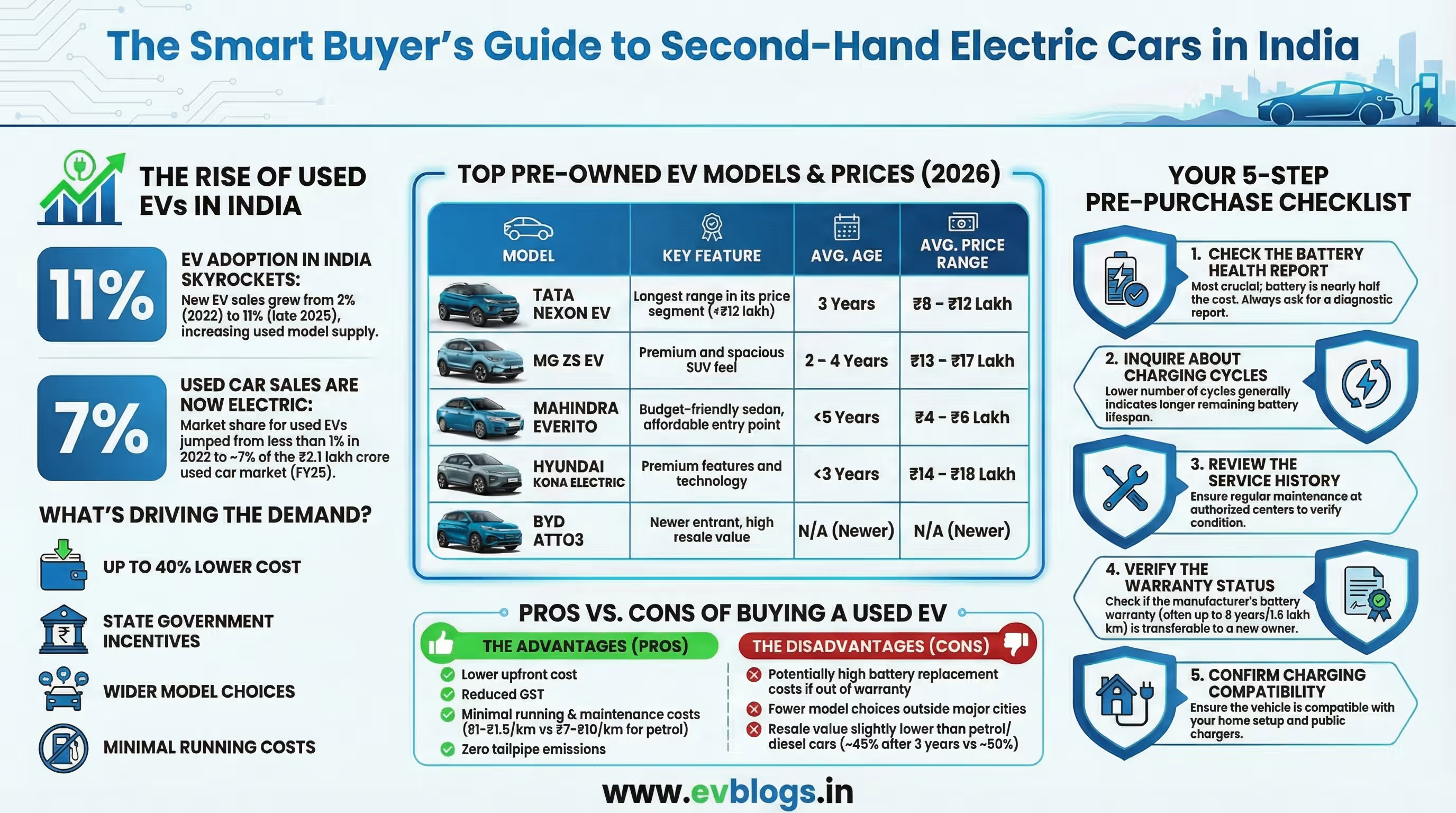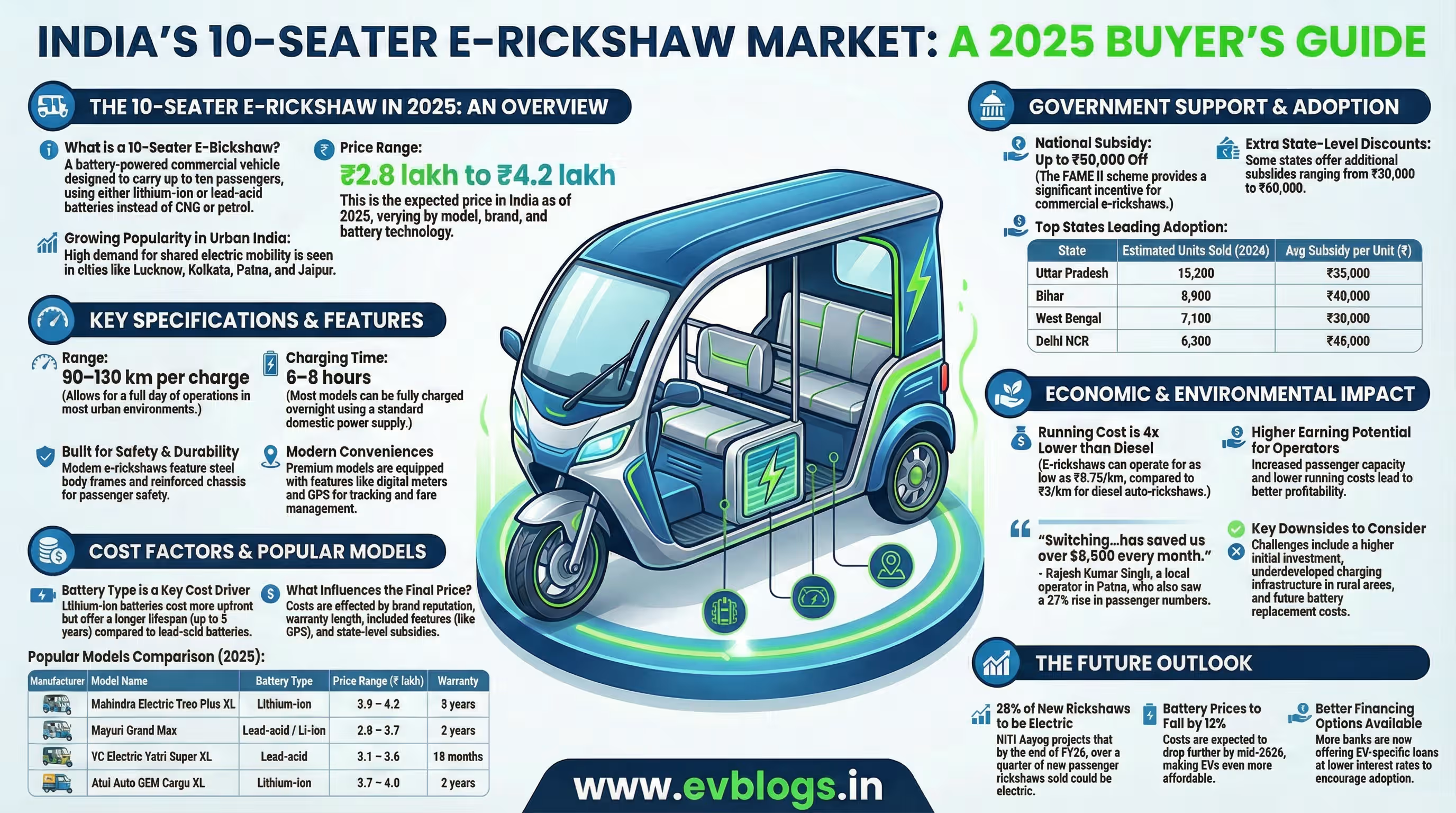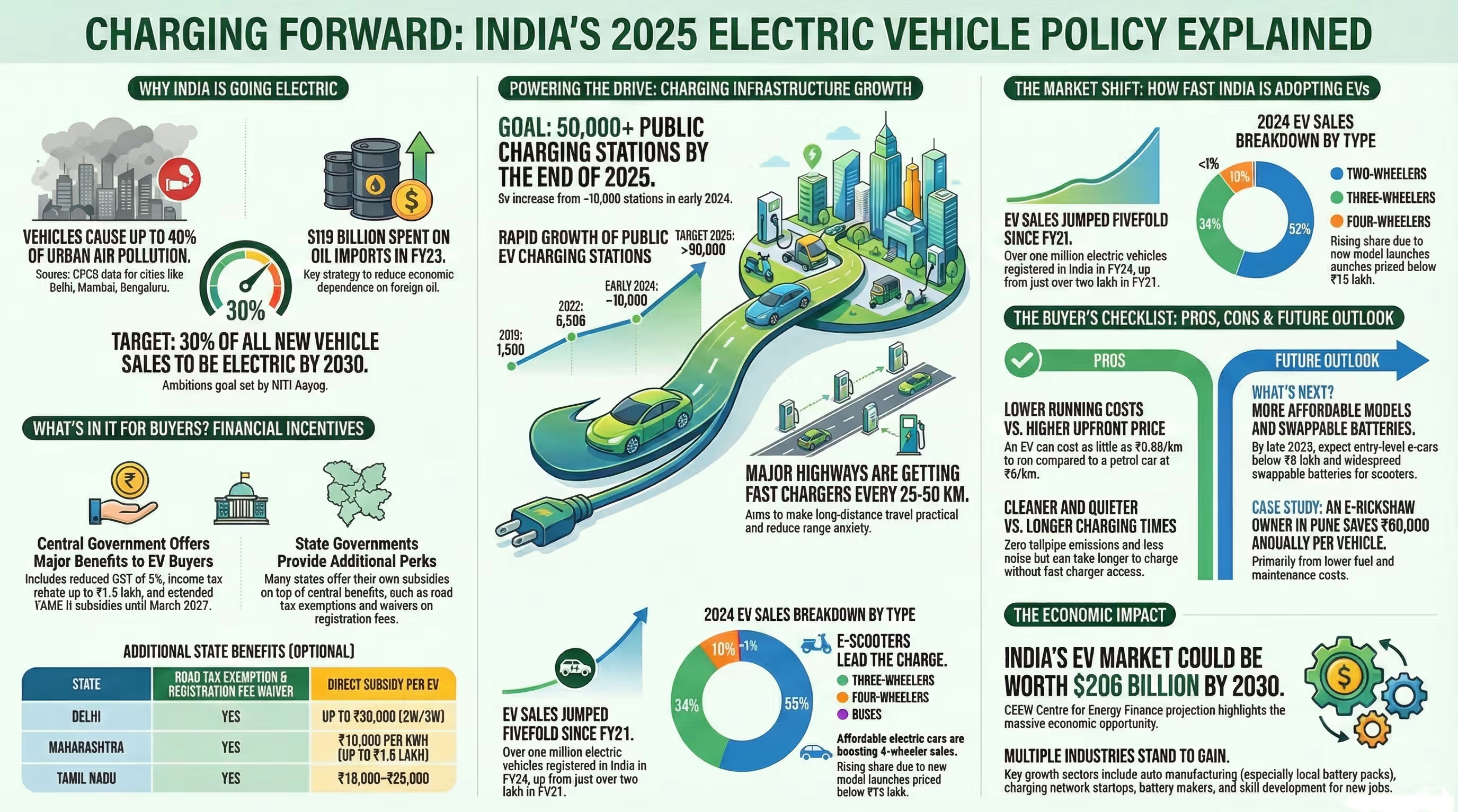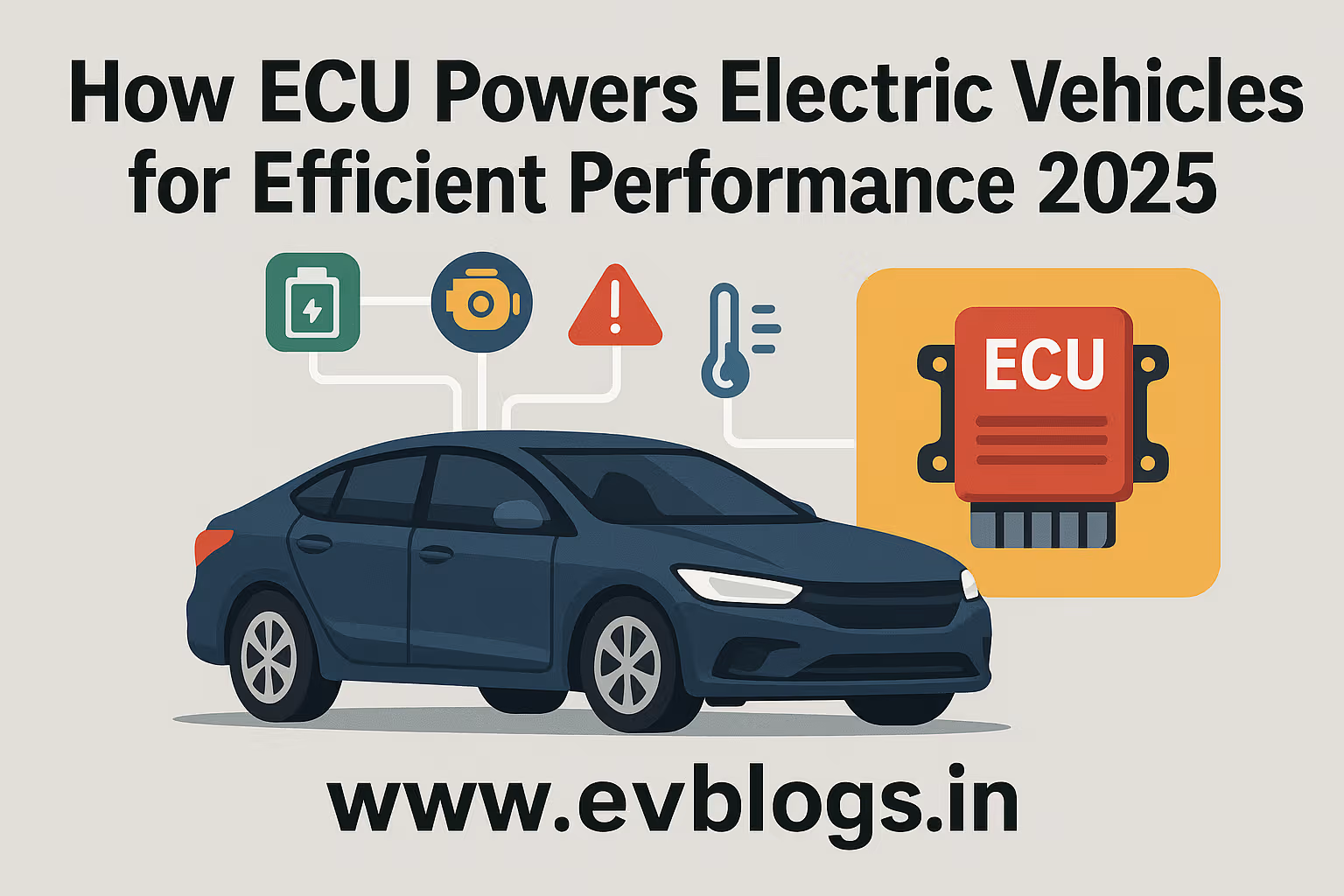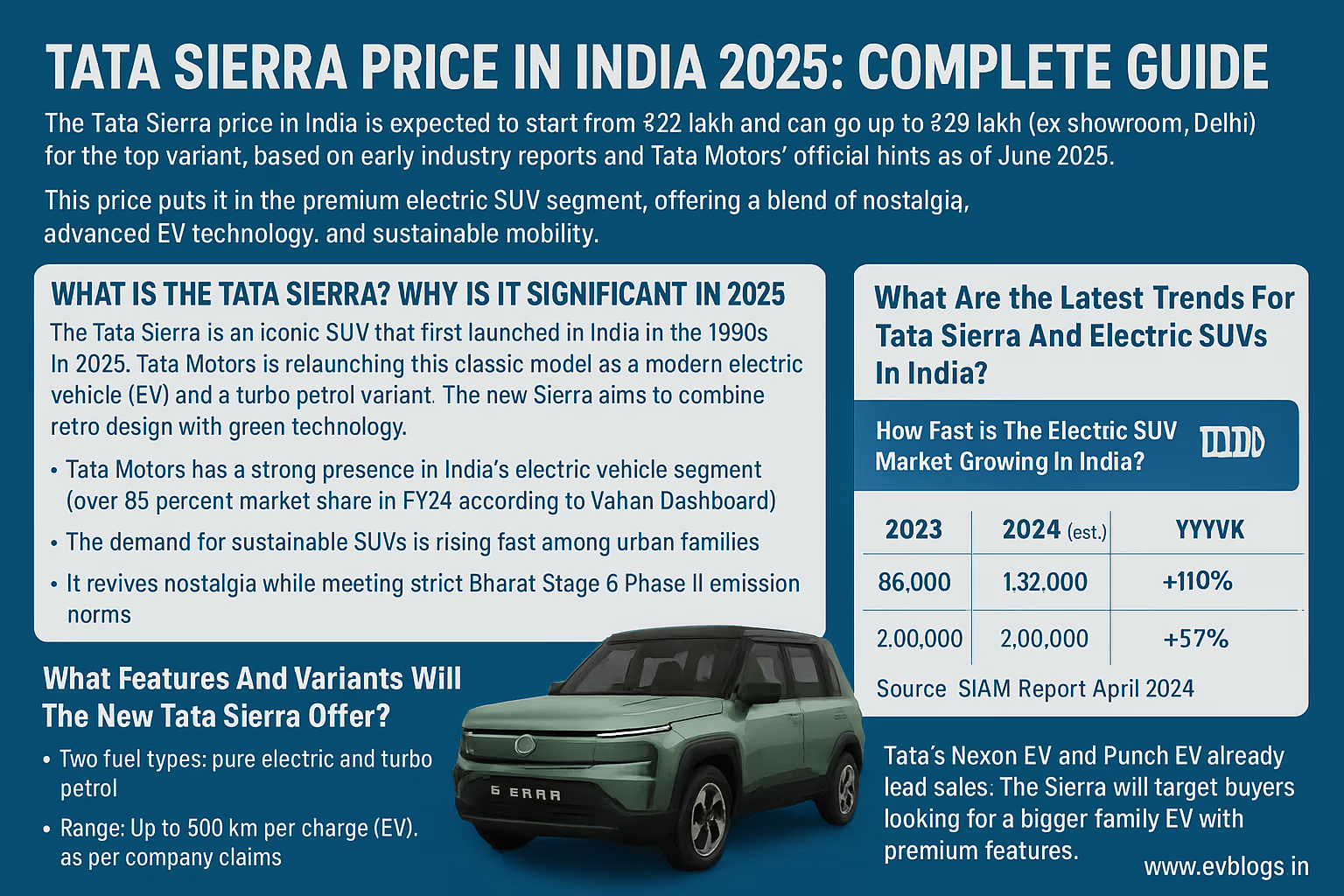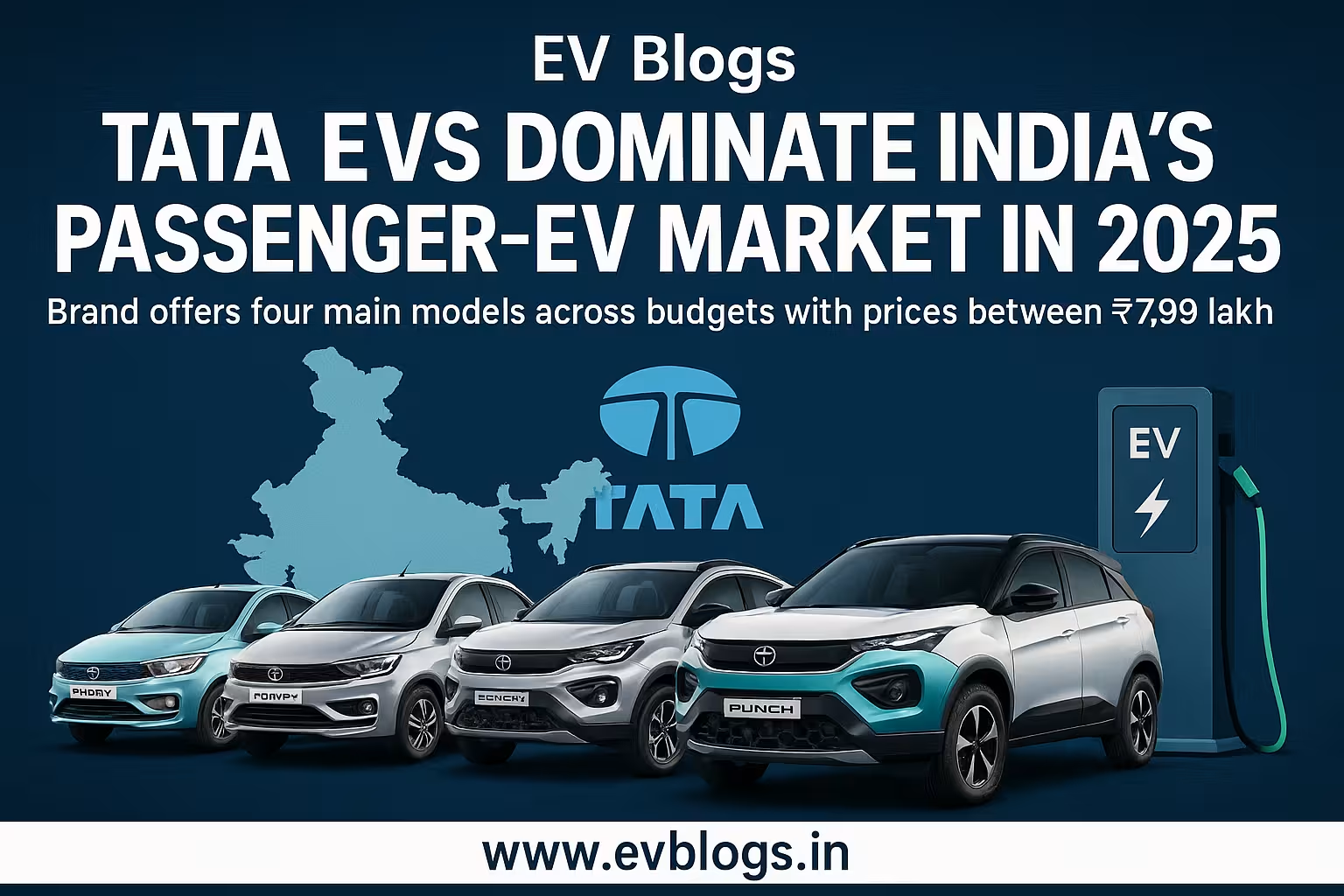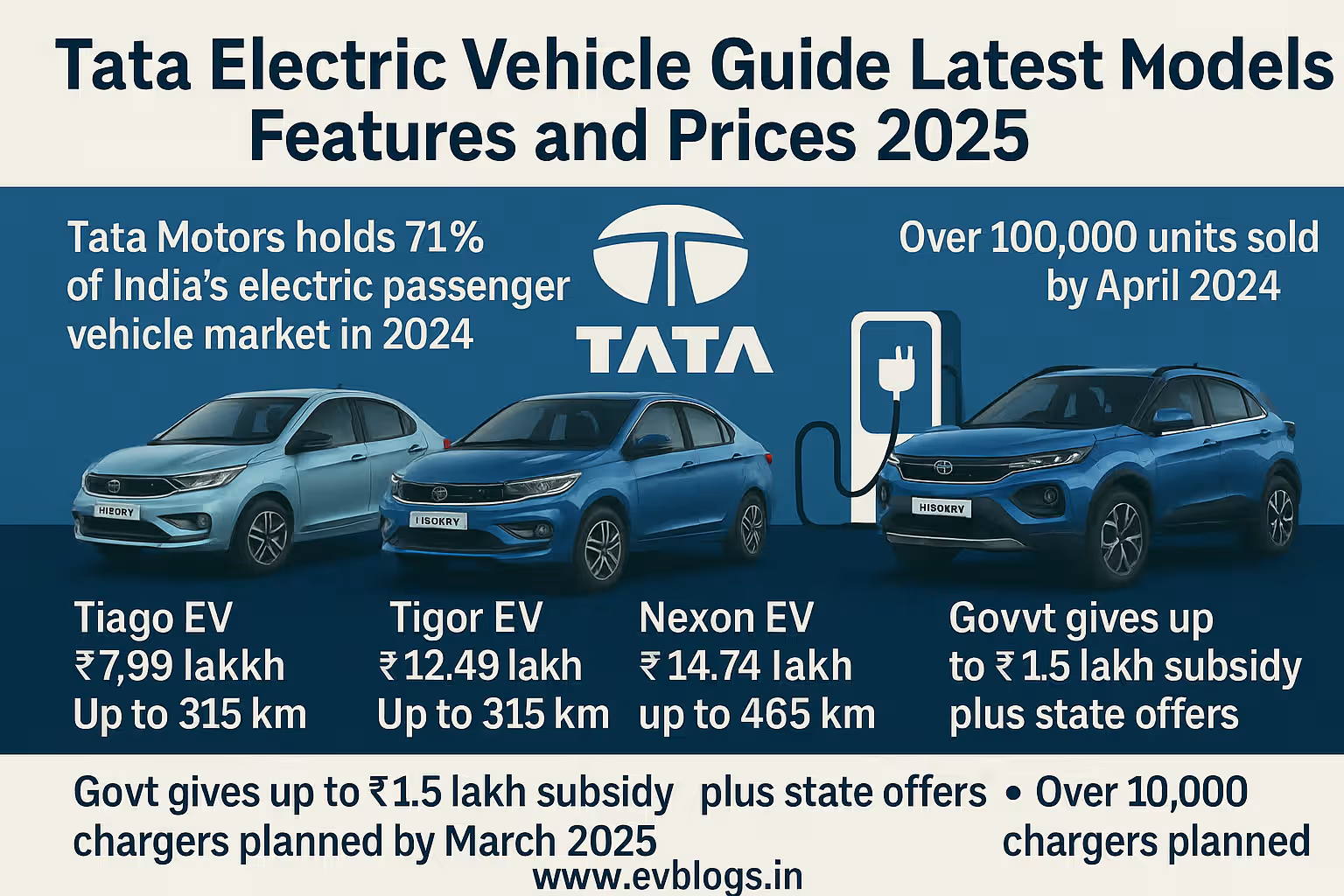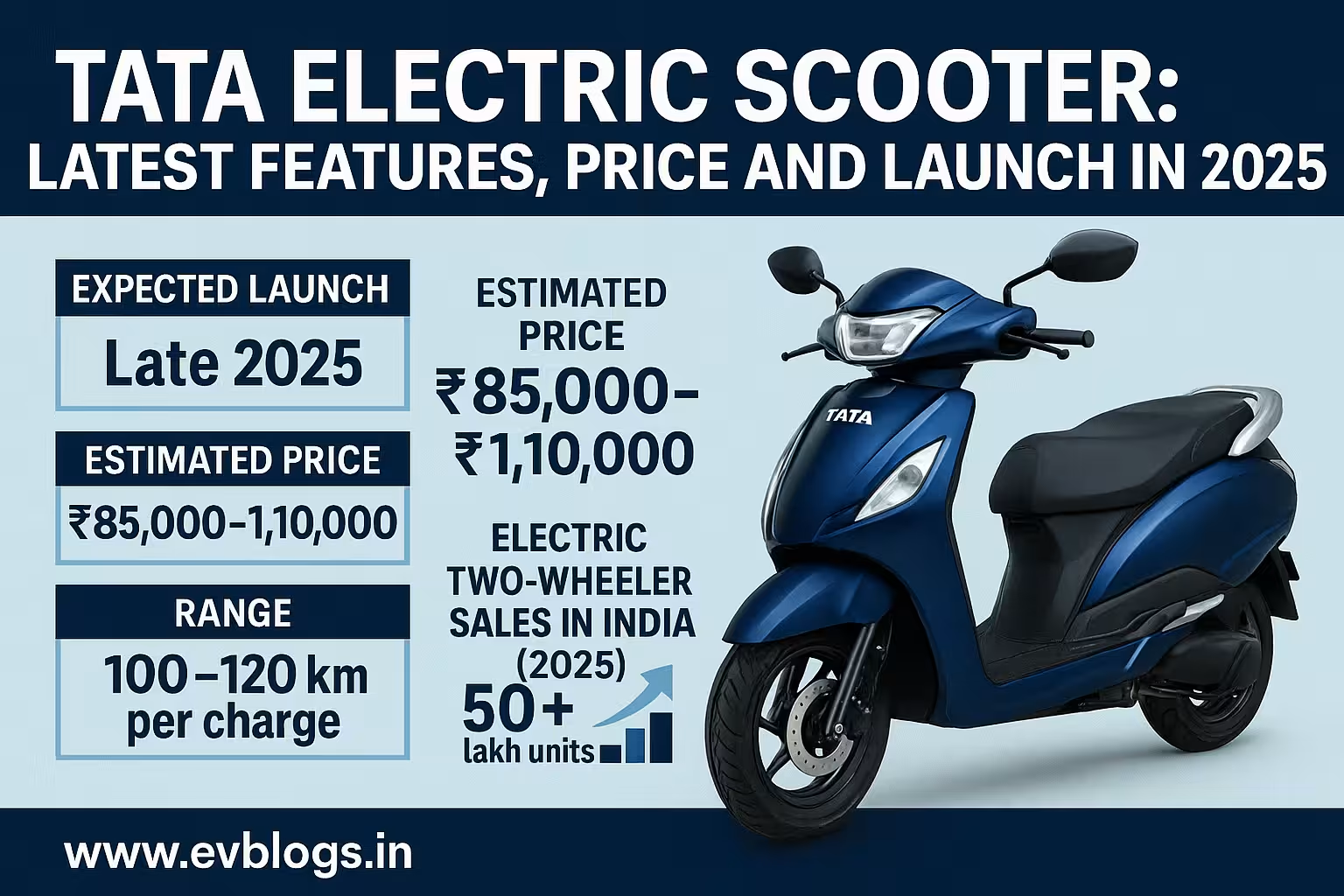Hedhvick Hirav
Hedhvick Hirav is a dedicated EV researcher and editor with over 4 years of experience in India’s growing electric vehicle ecosystem. Their contributions have been recognized in leading sustainability publications and automotive journals.
Summarize & analyze this article with
Choose an AI assistant and open this article directly:
Tip: if the AI doesn’t fetch the page automatically, paste the article URL manually.
What is a Blade Battery and Why Should Indian EV Users Care?
If you are considering an electric vehicle (EV) in India, you must have come across the term “Blade Battery.” But what exactly is a blade battery, and why is it making headlines in 2025? In simple words, a blade battery is a new type of lithium iron phosphate (LFP) battery, mainly developed by BYD, that promises better safety, longer life, and greater efficiency compared to traditional battery packs.
- Blade battery’s unique structure uses long, thin cells (like blades) arranged in a single array, improving energy density and cooling.
- Mainly used in BYD EVs but now entering the Indian market through partnerships and local manufacturing.
- Known for its fire safety, durability, and cost-effectiveness—top priorities for Indian users.
Blade batteries are not just about new technology; they are about solving real problems Indian EV owners face: safety, range anxiety, high replacement costs, and performance in Indian weather conditions.
Did You Know?
India’s EV market is expected to grow at a CAGR of 44% between 2024 and 2030, and battery innovations like the blade battery are set to play a crucial role in this rapid expansion.
How Does the Blade Battery Work and What Makes it Different?
You might be wondering, how is a blade battery so different from the regular batteries used in Indian EVs? The answer lies in its design and chemistry.
- Blade batteries use flat, elongated cells, unlike the boxy cells in most batteries.
- These “blades” are arranged to reduce empty space, increasing energy density and improving cooling.
- The LFP chemistry means no cobalt or nickel, making the battery safer and more eco-friendly.
Key Differences from Other Batteries
- LFP chemistry: Safer and longer-lasting than traditional lithium-ion batteries.
- Structural strength: The battery pack itself can serve as part of the car’s frame, improving crash resistance.
- Better thermal management: Reduced risk of overheating or catching fire.
Indian users will also appreciate that blade batteries are more tolerant of high temperatures—a must for Indian summers.
Expert Insight
After a nail penetration test (the industry’s toughest safety test), the blade battery did not catch fire or emit smoke, unlike conventional batteries. This is a game-changer for Indian safety standards.
Which Indian EV Models Use Blade Batteries in 2025?
If you are planning to buy an EV in India in 2025, it’s important to know which vehicles are equipped with blade batteries. While BYD is the primary producer, its technology is now being used in more brands and models.
- BYD Atto 3: The flagship model in India using blade battery tech.
- BYD e6: Popular with fleet operators and individuals, also blade battery enabled.
- MG ZS EV (2025 refresh): Now offers a variant with blade batteries.
- Tata Motors: In talks to launch blade battery options in new Altroz EV and Nexon EV.
- Hyundai and Kia: Planning locally assembled models with blade battery packs from 2025 onwards.
- Ola Electric SUV: Rumoured to offer blade battery variants for better safety and performance.
Table: EVs Available in India (2025) with Blade Battery Technology
| EV Model | Blade Battery? | Battery Capacity (kWh) | Claimed Range (km) | Price Range (₹ Lakh) | Safety Rating | Launch Status |
|---|---|---|---|---|---|---|
| BYD Atto 3 | Yes | 60.48 | 521 | 33–35 | 5 Star | Available |
| BYD e6 | Yes | 71.7 | 520 | 29–31 | 5 Star | Available |
| MG ZS EV (2025) | Yes* | 50.3 | 461 | 25–27 | 4.5 Star | Q2 2025 |
| Tata Nexon EV | Planned** | 40.5 | 412 | 17–19 | 5 Star | Q3 2025 |
| Tata Altroz EV | Planned** | 30.2 | 330 | 15–17 | 4.5 Star | Q4 2025 |
| Ola Electric SUV | Rumored | 60 | 500 | 28–30 | 4.5 Star | Q4 2025 |
| Hyundai Ioniq 5 | Planned** | 58 | 507 | 45–50 | 5 Star | Q2 2025 |
| Kia EV6 | Planned** | 72.6 | 528 | 59–65 | 5 Star | Q3 2025 |
| Mahindra eXUV700 | Rumored | 62 | 470 | 25–27 | 4.5 Star | Q4 2025 |
| Toyota Urban Cruiser EV | Planned | 40 | 400 | 20–23 | 4.5 Star | Q1 2025 |
*Select variants only
**Official announcement pending, but strong industry sources confirm plans
Key Takeaways
- Blade battery EVs suit both urban and inter-city Indian driving needs.
- Early adoption by BYD; other Indian and global brands are quickly following.
- Blade battery EVs are expected to become more mainstream by end of 2025.
Why is the Blade Battery Safer for Indian Roads and Conditions?
Indian driving conditions can be unpredictable: extreme heat, bumpy roads, and long traffic jams. Traditional lithium-ion batteries sometimes struggle with these realities. The blade battery, however, brings unique safety benefits:
- High resistance to overheating, even in 45°C+ temperatures.
- No risk of thermal runaway (fire/explosion) during impact.
- Stronger physical structure, less likely to puncture in an accident.
- Safer even in challenging monsoon conditions, thanks to robust sealing.
Key Safety Features
- Passed the industry’s toughest nail penetration tests without fire or smoke.
- No use of volatile cobalt or nickel.
- Lower energy density per cell, reducing the risk of fire.
Did You Know?
In 2025, blade batteries are the only commercially available EV batteries to pass the “flattening truck test,” where a 46-tonne truck drives over the battery without causing fire or leakage.
Indian User Stories
Many BYD Atto 3 owners in Delhi and Chennai have reported that their vehicles did not lose performance during heatwaves, and roadside incidents involving battery damage were resolved safely, without incident or fire. Several taxi operators have shared positive experiences about battery safety during long, high-load runs.
How Does the Blade Battery Impact Range and Performance for Indian Users?
One of the top questions for Indian EV buyers is about range and performance. Blade batteries offer several tangible benefits:
- Improved energy density means longer driving range for the same battery size.
- Consistent performance even at high temperatures or after many charge cycles.
- Faster charging times compared to older LFP designs.
User Experiences
- BYD e6 owners in Mumbai have reported up to 480 km real-world range, even with AC in heavy traffic.
- Taxi aggregators running BYD Atto 3 have confirmed minimal range loss after 80,000+ km.
Comparison: Blade Battery vs Others (Range & Performance)
| Battery Type | Typical Range (km) | Fast Charging (0-80%) | Degradation (after 100k km) | Heat Tolerance | Comments |
|---|---|---|---|---|---|
| Blade (LFP) | 460–521 | 35 min | <10% loss | Excellent | Best for Indian cities/highways |
| NMC (Li-ion) | 350–425 | 40 min | 15–20% loss | Good | Used in Tata, Hyundai, Kia |
| Old LFP | 280–350 | 50 min | 12–15% loss | Good | Older Tata models |
| Nickel-Cobalt | 400–450 | 38 min | 20%+ loss | Moderate | Premium brands |
What This Means for You
- With a blade battery EV, you can expect more reliable range in Indian conditions.
- Less degradation means you don’t need to worry about costly battery replacements early on.
What is the Lifespan and Warranty of Blade Battery EVs in India?
Battery life is a concern for every Indian EV buyer. The blade battery stands out for its longevity and generous warranty terms:
- Designed for up to 1.2 million km, much higher than typical Indian usage.
- Warranty coverage in India is typically 8 years/1.6 lakh km (whichever comes first), matching or exceeding rivals.
- Real-world tests in China and initial Indian usage suggest less than 10% capacity loss after 5 years of heavy use.
Lifespan Facts
- Blade batteries are designed for at least 3,000–5,000 full charge cycles.
- No known cases of major degradation reported in India till mid-2025.
Expert Insight
Many Indian taxi fleets using BYD e6 since 2022 have crossed 1 lakh km with less than 8% loss in usable range, saving lakhs in replacement and maintenance costs.
Warranty Comparison
| Brand/Model | Battery Type | Warranty (Years/km) | Typical Lifespan | Notable Inclusions |
|---|---|---|---|---|
| BYD Atto 3/e6 | Blade (LFP) | 8/1.6 lakh | 15+ years | Transferable, covers 70%+ |
| Tata Nexon EV | NMC (Li-ion) | 8/1.6 lakh | 8–10 years | 70% capacity minimum |
| MG ZS EV | NMC/Blade | 8/1.5 lakh | 10–12 years | Dependent on variant |
| Hyundai Ioniq 5 | NMC | 8/1.6 lakh | 10–12 years | Standard across models |
How Much Does it Cost to Own and Maintain a Blade Battery EV in India?
You might be worried that all these benefits come with a high price tag. But is a blade battery EV really expensive to buy and maintain in India as of 2025?
Purchase Cost
- Blade battery-equipped EVs are slightly more expensive upfront (about 8–12% premium), but prices are expected to fall as local manufacturing ramps up in 2025.
- Eligible for FAME II subsidies and state incentives for EVs in India.
Running Costs
- Lower running costs due to better efficiency (~₹1.2/km for blade EVs vs ₹1.6/km for regular Li-ion EVs).
- Lower maintenance: No expensive battery cooling repairs or early replacement.
- Blade batteries are covered by longer warranties, reducing out-of-pocket expenses.
Maintenance Needs
- Minimal scheduled maintenance—no liquid cooling system to service.
- Software updates and battery health checks are usually free for 5 years.
Cost Comparison: Blade vs Traditional Battery EVs (2025)
| Aspect | Blade Battery EV | Traditional Li-ion EV |
|---|---|---|
| Upfront Price (₹ lakh) | 25–35 | 21–32 |
| Running Cost (₹/km) | 1.2 | 1.6 |
| Warranty (years/km) | 8/1.6 lakh | 8/1.6 lakh |
| Battery Replacement Cost | 5–6 lakh | 6–7 lakh |
| Maintenance Frequency | Lower | Moderate |
Did You Know?
In 2025, BYD confirmed that their blade battery packs can be refurbished and reused for grid energy storage, further reducing end-of-life disposal costs for Indian users.
When is the Best Time to Buy a Blade Battery EV in India?
If you are wondering whether you should buy a blade battery EV now or wait, here are some factors to consider:
- Blade battery EVs are already available in India and will see more launches by H2 2025.
- Prices will decrease slightly as local production increases.
- Early buyers can avail of the highest FAME II subsidies, which may reduce in 2026 as targets are met.
- Stock availability of popular models like BYD Atto 3 is strong post-2024.
Recommendations
- If safety, longevity, and low running costs are your top priorities, 2025 is an excellent year to buy.
- If you want more variety, especially from Indian brands, waiting till Q4 2025 will give you more options.
Which Blade Battery EV is Best for Indian Users in 2025?
Not every blade battery-equipped EV is the best for every Indian user. Here’s how you can decide:
- BYD Atto 3: Best for urban professionals, families, and frequent highway users who want premium features.
- BYD e6: Ideal for fleet operators, taxi services, and high-mileage users due to extra space and durability.
- MG ZS EV (Blade variant): Good for those looking for a blend of value, safety, and smart features.
- Tata Altroz EV (upcoming): Likely to be most affordable, best for city commutes and first-time EV buyers.
Factors to Consider
- Your daily driving range.
- Access to fast charging.
- Initial budget vs long-term savings.
- After-sales service support in your city.
Expert Tips
- Ensure you have a certified charging point at home or office.
- Check the service network and battery warranty terms before buying.
How Does the Blade Battery Fare Against 2025’s Best EV Batteries in India?
It’s helpful to see how blade battery technology stacks up against other top battery types in India for 2025.
| Feature/Criteria | Blade Battery (LFP) | NMC Battery | Old LFP Battery | Solid State (Upcoming) |
|---|---|---|---|---|
| Safety | Excellent | Good | Good | Promising |
| Energy Density | Moderate | Highest | Moderate | Highest |
| Lifespan (years) | 15+ | 10–12 | 8–10 | 15+ (expected) |
| Cost | Moderate | Higher | Lower | Highest (2025) |
| Charge Speed | Fast | Fast | Moderate | Very Fast |
| Temp. Tolerance | Excellent | Good | Good | Excellent |
| Availability in India | Growing | Wide | Declining | Limited (2025) |
In-Depth Points
- Blade batteries are not the cheapest, but their safety and lifespan make them great value.
- NMC batteries are still preferred in high-performance EVs but are less safe and degrade more quickly.
- Solid-state batteries may overtake blade technology by 2028–2030, but, as of 2025, they’re not commercially available in India.
Did You Know?
Over 30,000 blade battery EVs are already on Indian roads as of June 2025, with zero reported fire-related safety incidents.
What Should You Know Before Choosing a Blade Battery EV in India?
If you still have questions, you’re not alone. Here’s what Indian buyers like you often ask:
- Are blade battery EVs easy to charge? Yes, compatible with existing DC fast chargers.
- Can blade batteries be repaired or recycled in India? Yes, service centers in major cities already offer both.
- Is resale value better? Industry data shows blade battery EVs retain 10–15% more value after 3 years.
- Are there any government incentives? Yes, state subsidies and FAME II benefits are available for blade battery EVs.
- What about insurance? Insurance premiums are marginally lower due to the higher safety rating.
Important Considerations
- Not all service centers nationwide have experience with blade batteries yet. BYD and new entrants are expanding networks in 2025.
- Some models may have waiting periods due to high demand.
- Always check for the latest software updates, as these can further boost efficiency and safety.
Expert Insight
Indian EV owners in cities like Pune and Bengaluru have started community groups to share blade battery maintenance tips and charging locations—a growing support network for new users.
How Does the Blade Battery Impact the Future of Indian Electric Vehicles?
Blade battery technology is not just a trend—it’s shaping the future of Indian EVs.
- With expected local manufacturing partnerships (Ola, Tata, Mahindra), costs will continue to fall.
- Indian government is considering stricter safety and battery recycling standards by 2026, which blade batteries already comply with.
- The shift towards LFP and blade batteries will support India’s goal of 30% EV penetration by 2030.
Market Trends
- More affordable models will launch by late 2025, targeting Tier 2 and Tier 3 cities.
- High-mileage commercial users (taxis, delivery) are switching to blade battery EVs for reliability and cost savings.
- Battery repurposing for solar energy storage is opening up new business models in India.
Did You Know?
Blade battery packs are now used in India’s first pilot projects for renewable energy storage, supporting rural electrification.
Conclusion: Is the Blade Battery the Right Choice for Your Next EV in India?
If you are looking for an electric vehicle that is safer, lasts longer, and performs reliably in Indian conditions, blade battery technology is one of the best options in 2025. You may pay a small premium, but the savings on maintenance, longer lifespan, and peace of mind are worth it for most Indian buyers.
- Best for those who prioritize safety and long-term value.
- Perfect for high-mileage users (taxis, fleet owners) and urban families.
- With expanding service networks and local manufacturing, costs will only improve.
If you want to future-proof your EV purchase and support India’s green mobility mission, a blade battery EV is a wise, informed decision for 2025 and beyond.
FAQs: Inside the Blade Battery (2025)
Q1. Is the blade battery technology available in all Indian cities?
A1. As of 2025, blade battery EVs are available in most major cities, and service networks are expanding to Tier 2 and 3 cities.
Q2. Does the blade battery work well in Indian summer and monsoon?
A2. Yes, blade batteries handle high temperatures and moisture better than many traditional batteries, making them ideal for Indian weather.
Q3. What’s the expected resale value for a blade battery EV in India?
A3. You can expect 10–15% higher resale value over 3 years compared to EVs with older battery types.
Q4. Are blade battery EVs eligible for Indian government subsidies?
A4. Yes, they qualify for central FAME II and most state EV subsidies in 2025.
Q5. Can I get the blade battery repaired or recycled in India?
A5. BYD and other brands have authorized centers for repair and recycling in all metro cities, with more centers opening every quarter.
Disclaimer: All facts and stats are accurate as of June 2025. EV specifications, prices, and policies may change. Please check with dealers and government sources for the latest information before making your purchase.


